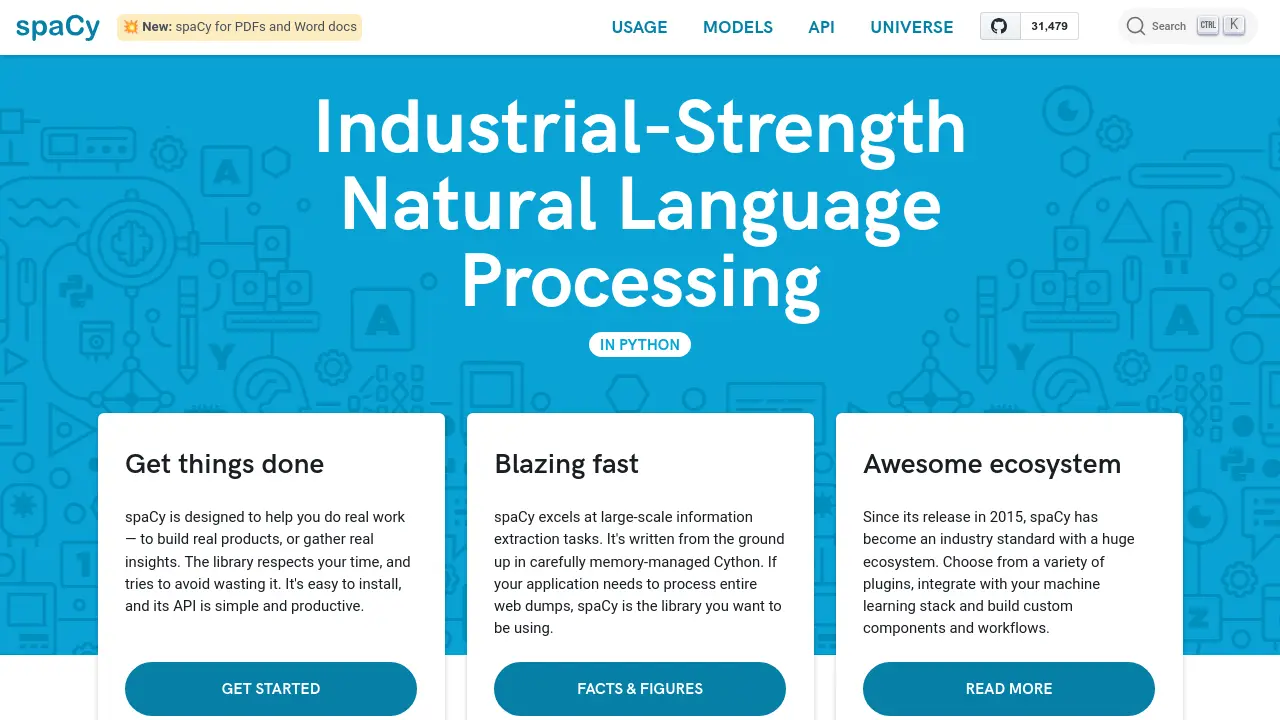spaCy
Industrial-Strength Natural Language Processing in Python

Description
spaCy is an open-source software library for advanced Natural Language Processing (NLP), written in Python and Cython. Designed with a focus on practical application, it helps users build real products and gather insights efficiently. It boasts high performance, making it suitable for large-scale information extraction and processing extensive text data like web dumps, leveraging carefully memory-managed Cython implementation.
Since its initial release in 2015, spaCy has become an industry standard supported by a large ecosystem of plugins and integrations. It supports features like linguistically-motivated tokenization, named entity recognition, part-of-speech tagging, dependency parsing, and more across over 75 languages. The library includes pretrained pipelines, supports custom models from frameworks like PyTorch and TensorFlow, and offers tools for training, deployment, and workflow management, including integration with Large Language Models (LLMs).
Key Features
- Support for 75+ languages with trained pipelines for 25 languages.
- High-performance processing optimized for speed and large datasets.
- Production-ready training system with reproducible configurations.
- Components for NER, POS tagging, dependency parsing, text classification, etc.
- Integration with pretrained transformers like BERT.
- Extensible architecture for custom components and models (PyTorch, TensorFlow).
- Built-in visualizers for syntax and Named Entity Recognition.
- Tools for model packaging, deployment, and workflow management.
- spacy-llm package for integrating Large Language Models into NLP tasks.
- Open-source with a large community and ecosystem.
Use Cases
- Building production-level NLP applications.
- Large-scale information extraction from text.
- Processing entire web dumps or large document collections.
- Academic research in computational linguistics.
- Developing custom text analysis workflows.
- Integrating LLM capabilities into structured NLP pipelines.
- Training custom NLP models for specific tasks.
- Analyzing text data for insights.
You Might Also Like
ranktracking.co
OtherThe simplest and most cost-effective rank tracker on the market
Bubbly AI
FreemiumEffortless Meeting Insights
Copyter
FreemiumAll-in-one AI tool for generating text, voice, and image content.
Smart Media Cutter
FreemiumThe fastest way to cut and trim streams and long videos
Kai
PaidAn AI platform that helps support mental health patients more effectively on a daily basis.